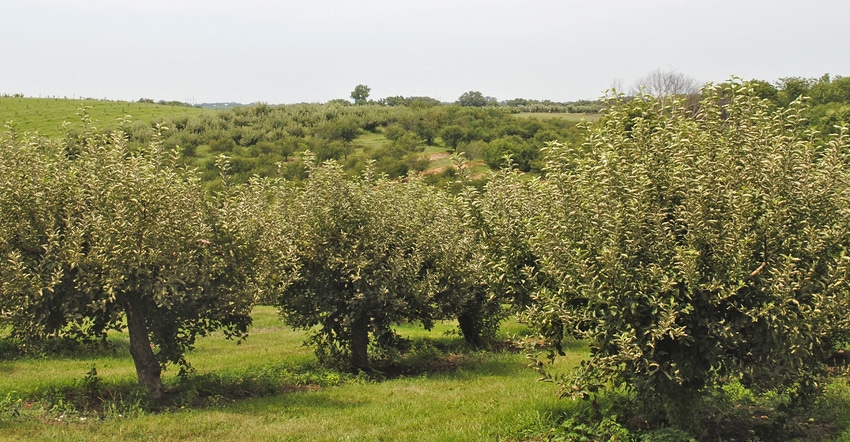
Apples are a common crop around small orchards and farmsteads across the Great Plains. While spring is the most obvious time for tree care, fall also provides an opportunity for crucial management practices that help ensure the health of the trees and the harvest going into next year.
According to Nebraska Extension educator Sarah Browning, here is a list of fall do’s and don’ts when it comes to apple tree care.
Things to do
Do mow around the trees to eliminate vegetation that can become a hiding site for voles, rabbits and other critters. Young trees with thin bark should be given additional protection so the bark isn’t damaged by wildlife. For rabbits, protective materials such as wire cages, Tyvek sheets or hardware cloth should be wrapped around the trees at least 3 inches above the snow line in the winter.
Do apply mulch under newly fall-planted trees to help prevent soil heaving and to help the trees harden off properly and develop full winter hardiness before the first hard freeze.
Do inspect for fire blight cankers during the dormant season. Certain varieties of apples are more susceptible than others to fire blight, including Braeburn, Fuji, Gala, Granny Smith, Jonathan, Rome, Yellow Transparent and Idared. During the winter months, cut old blight cankers out as thoroughly as possible before other tree structure pruning is done. Remove the blighted cuttings from the orchard and disinfect pruning equipment before pruning other trees.
Do inspect trees for overwintering pests such as mites, scale or aphids. These can be suppressed with horticultural oils that are applied during the dormant season. In the dormant season, these oils function as insecticides and miticides because they suffocate eggs and other susceptible stages of some insects.
Things to avoid
Don’t water trees after mid-September unless there is a severe drought.
Don’t make fall fertilizer applications because these would stimulate new growth that may be damaged by early freezing temperatures.
Don’t prune trees in the fall for the same reason you don’t want to fertilize. Pruning stimulates new growth, and that new growth would be susceptible to early frost damage. It is best to wait until just before new growth begins in the spring. While large commercial orchards may approach pruning differently than small farmstead orchards, in general, a grower would start pruning the most winter-hardy trees such as apples and pears first in the earliest part of spring. Then they would commence to pruning cherries, peaches and apricots.
Learn more by contacting Browning at [email protected].
About the Author(s)
You May Also Like






